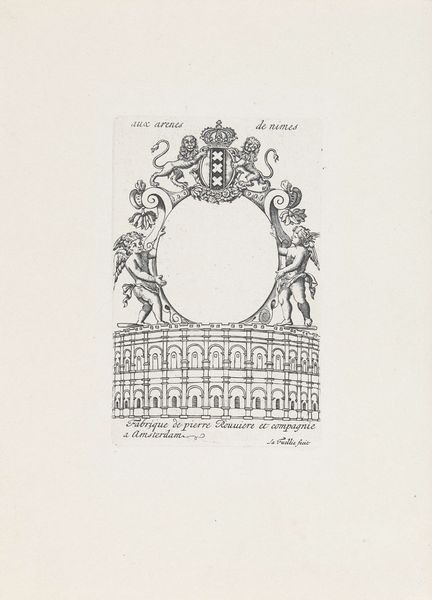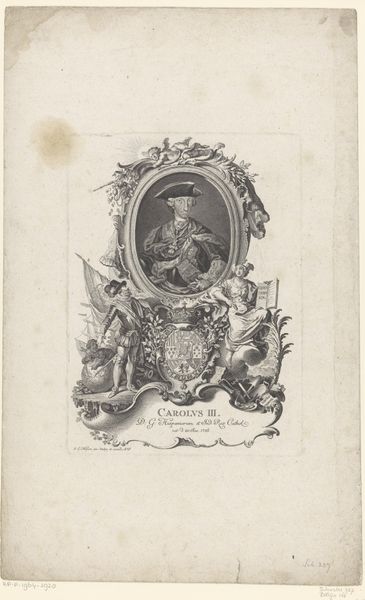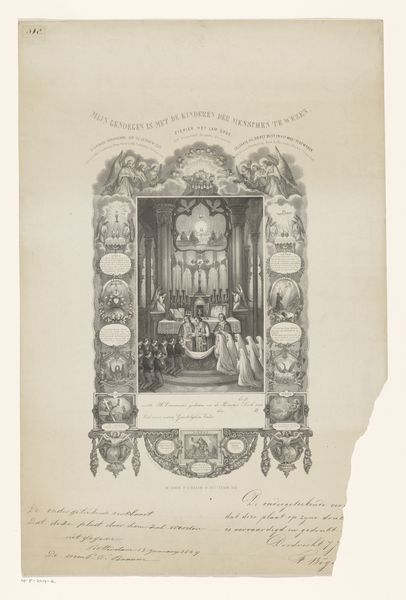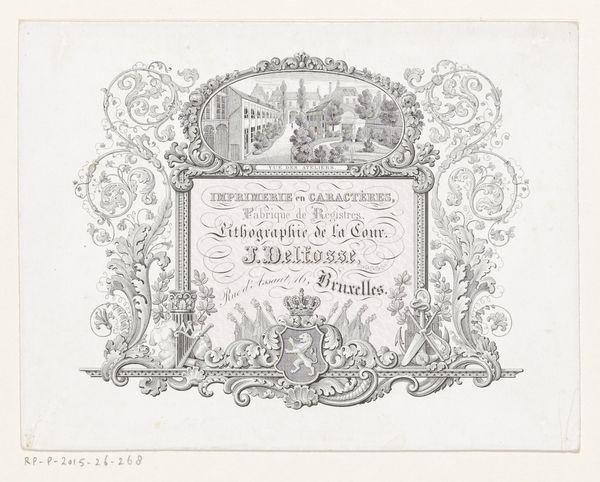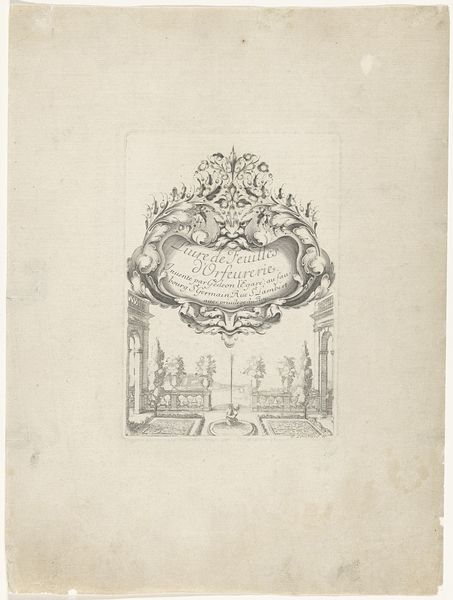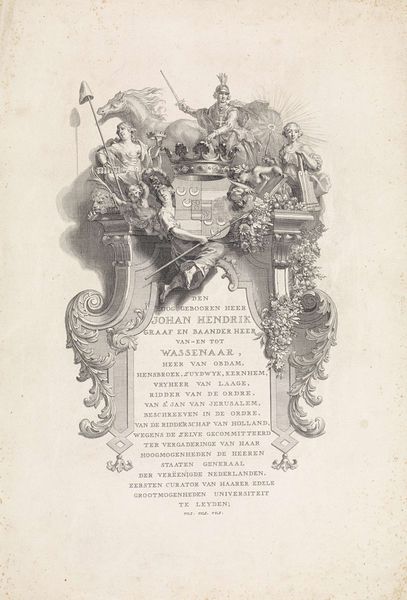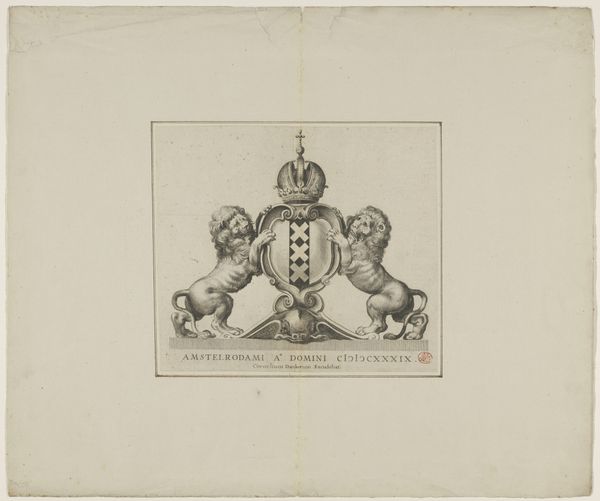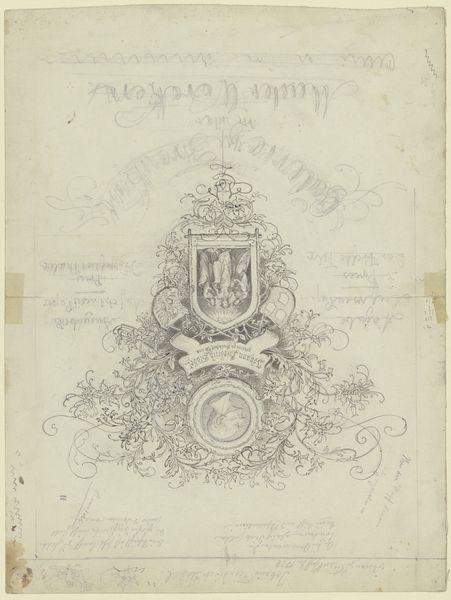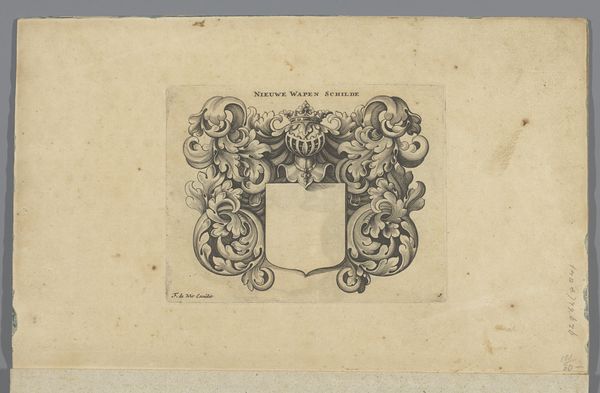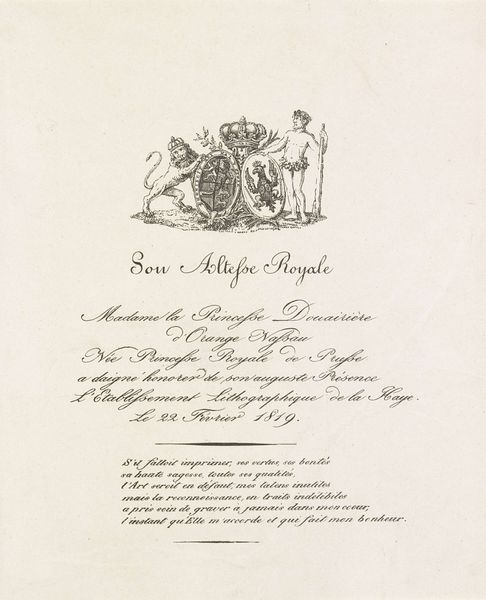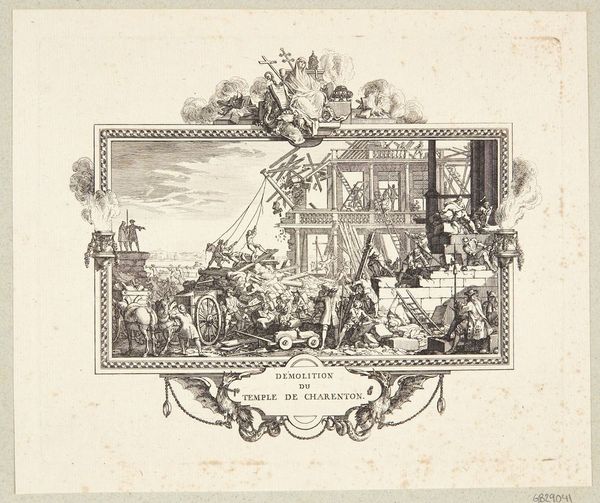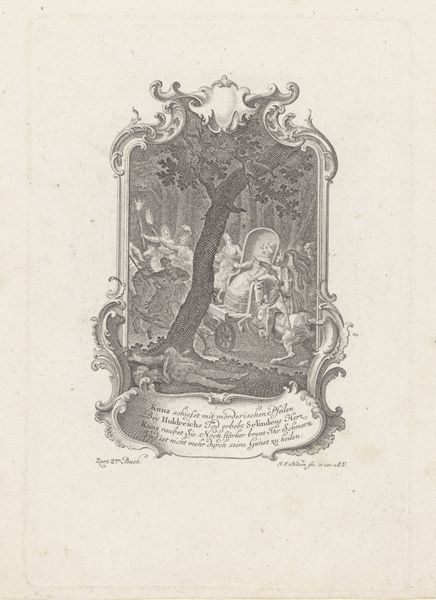
drawing, print, paper, ink, engraving
#
drawing
#
neoclacissism
# print
#
paper
#
ink
#
geometric
#
line
#
academic-art
#
engraving
Dimensions: height 280 mm, width 211 mm
Copyright: Rijks Museum: Open Domain
Editor: This is "Wapen van het Koninkrijk der Nederlanden," created in 1826 by G. Hermans. It’s an engraving, a very precise and linear depiction of the Dutch royal coat of arms. It has a classical, almost austere feel. What can you tell us about this piece? Curator: This print offers a potent visual representation of power and national identity in post-Napoleonic Netherlands. Its neoclassical style, with precise lines and geometric shapes, wasn't just an aesthetic choice. It was a conscious reaching back to an idealized past to legitimize the newly formed kingdom after years of revolution and French rule. How do you think the imagery used here, such as the lions and the crown, played a role in constructing that identity? Editor: Well, the lions certainly project strength, and the crown signifies royalty. They seem pretty standard symbols of authority, I guess? Curator: Exactly, but it’s *who* gets to use those symbols, and how, that matters. This image circulated at a time when concepts of citizenship and national belonging were actively being shaped, particularly for a populace that had experienced considerable political upheaval. This emblem normalizes the restored monarchy and promotes a sense of shared national heritage and purpose. Can you see how even a seemingly straightforward image like this could function as a powerful tool of social and political consolidation? Editor: I hadn't thought about it that way. It makes you wonder whose history gets prioritized when national symbols are created and used like this. Curator: Precisely. And by looking critically at these images, we start to unpack those power dynamics and understand whose voices may be marginalized or erased in the process of nation-building. Editor: It's interesting to consider how symbols, even those from the past, still carry weight in shaping contemporary ideas of identity and belonging.
Comments
No comments
Be the first to comment and join the conversation on the ultimate creative platform.
